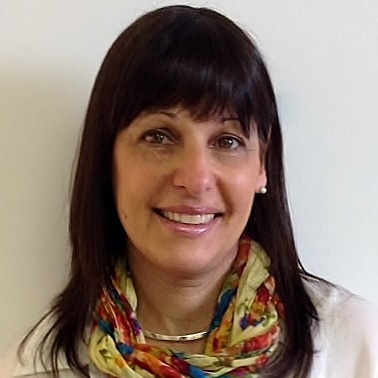VIRTUAL: TRAUMA-FOCUSED INTEGRATED PLAY THERAPY: A TREATMENT MODEL FOR WORKING WITH TRAUMATIZED CHILDREN UTILIZING CHILD-CENTERED PLAY THERAPY INTEGRATED WITH CBT, AND OTHER EXPRESSIVE THERAPIES

Myriam Goldin, LCSW, RPT-S
Program Goals
The goal of this workshop is to provide participants with a working knowledge of an integrated model well-anchored in trauma theory and informed by current scientific knowledge as well as research. Trauma-Focused Integrated Play Therapy is relationship-based and utilizes principles of child-centered play therapy in order to 1) allow children to self-direct; 2) give children an experience of control and mastery; and 3) permit children to access natural healing mechanisms such as post-trauma play. By giving children opportunities to work in a permissive setting, clinicians observe and document how children utilize gradual exposure, gain an understanding of traumatic experiences, discharge affect, and begin to manage experiences that can feel overwhelming or frightening. This trauma-anchored model integrates directive strategies as needed, deepens metaphor work by amplifying the child’s ability to explore the material they externalize, and provides children with a safe, predictable environment for processing interpersonal trauma. This model values children’s pacing, respects defensive strategies, and seeks to help children build alternative skills to cope with difficult thoughts, motions, or behaviors.
Program Schedule
The schedule will consist of didactic presentations, experiential work, and processing clinical case material.
Day 1: 6 Instruction Hours
08:30 - 8:45 Introductions and needs assessment: Participant’s “wish list”
08:45 -10:15 Brief Experiential Exercise and Discussion of Whole-Brain Activities
10:15 -10:30 BREAK
10:30 -12:00 Didactic presentation of Trauma theory, the relevance of phenomenological experiences, and basic principles that anchor TFIPT
12:00 - 1:00 LUNCH
01:00 - 2:30 Assessment Strategies and Utilizing Play-Based Activities to Understand Children’s Unique Functioning
02:30 - 2:45 BREAK
02:45 - 4:00 Case Discussions, experiential exercises and Setting the Context for Therapy
Day 2: 6 Instruction Hours
08:30 – 10:15 Discussion of child-centered play therapy goals and principles, an integrated model using directive and nondirective strategies and defining the three-phase model of treatment in TFIPT Phase One Goals and Interventions
10:15 -10:30 BREAK
10:30 -12:00 Experiential Sandtray. Group Discussion
12:00 - 01:00 LUNCH
01:00 - 02:30 Phase two treatment: Addressing traumatic memories and integrating directive strategies with avoidant children: The use of Post-Traumatic Play
02:30 - 2:45 BREAK
02:45 - 4:00 Phase three treatment: Relationship building, prevention work, and working with children in their family context Termination Planning & Closure Exercise
Course Objectives
By the end of the course participants will be able to:
- Identify at least two factors in trauma theory
- Discuss a rationale for utilizing child-centered play therapy
- List two play therapy ways in which children may feel comfortable showing their feelings
- Explain two play-based assessment strategies that might facilitate children’s self-disclosure
- List the three phases of treatment with traumatized children
- List two primary activities employed in Phase One of treatment
- Describe two playful directive strategies to help children address traumatic material
- Identify three characteristics of post-trauma play
- List two interventions that might help “move” post-trauma play that has become “stuck”
- Apply two techniques that might facilitate termination of therapy
References
Gil, E.(2006). Helping abused and traumatized Children: Integrating Directive and Nondirective Approaches. New York: The Guilford Press.
Gil, E.(2017). Posttraumatic Play: What clinicians need to know. New York: The Guildford Press.
Gil, E. & Crenshaw, D. (2016). Termination challenges in child psychotherapy. New York: The Guildford Press.
Schaefer, C.E., & Drewes, A.A. (Eds.). (2014). The therapeutic powers of play: 20 core agents of change. Hoboken, NJ: Wiley.
Drewes, A.(2009). Blending Play Therapy with Cognitive Behavioral Therapy: Evidence-Based and Other Effective Treatments and Techniques.
Haen, C. (2020). The Roles of Metaphor and Imagination in Child Trauma Treatment. J. of Infant, Child, and Adolescent Psychotherapy.
General Course Information
This course is limited to 25 virtual participants and is designed to facilitate experiential work, group discussion, and processing of clinical material. Participants will have ample opportunity to discuss their specific needs and clinical questions. Participant feedback will be sought out throughout the day.
Clinical case discussions will adhere to HIPPA regulations regarding client confidentiality.
Target audience is Mental Health Professionals: Social Workers, Psychologists, Licensed Professional Counselors and Licensed marriage and Family Therapists.
The program is Beginning Level
This event is sponsored by Starbright Training Institute. Starbright Training Institute is approved by the Association for Play Therapy to offer continuing education specific to play therapy (APT Approved Provider No. 96-029).
For information about continuing education credit, fees, and deadlines for cancellations/refunds, please see https://starbrighttraininginstitute.com/.
Myriam Goldin, LCSW; RPT-S, is Director of Starbright Training Institute. Phone: 703-980-2886. Email: starbright.inst@outlook.com Web Page: starbrighttraininginstitute.com
Grievance Policy
Starbright Training Institute seeks to ensure equitable treatment of every person and to make every attempt to resolve grievances in a fair manner. Please submit a written grievance to: Myriam Goldin, LCSW; RPT-S, Director of Starbright Training Institute. Phone: 703-980-2886. Email: starbright.inst@outlook.com Web Page: starbrighttraininginstitute.com
Grievances would receive, to the best of our ability, corrective action in order to prevent further problems.
Accommodations for the Differently Abled
Starbright Training Institute’s training facilities are handicap accessible. Individuals needing special accommodations please contact the Director of Starbright Training Institute. See contact information above.
Course Instructor Contact Information
Name: Myriam Goldin
Bio: https://starbrighttraininginstitute.com/about-me/
Website: https://starbrighttraininginstitute.com/
Email: mgoldin@gilinstitute.com
Phone: 703-980.2886
Starbright Training Institute
8626 Lee Highway
Suite 200
Fairfax, VA 22031